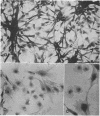Abstract
Two haploid cell lines have been established from androgenetic embryos of the frog, Rana pipiens; one line has been maintained in culture for 150 generations, the other for 200 generations. Karyotypes of the two lines agree well with the standard for the species although some chromosomes show small differences in length. The cells multiply in the same defined basal medium used for culture of other anuran cell lines; this medium consists of the usual amino acids, vitamins, and serum macromolecules plus an exogenous purine source. Both the haploids resemble „permanent” cell lines in their prolonged multiplication in culture. The two lines differ in their mode of growth, one being epithelial-like, the other forming an overlapping meshwork of fibroblast-like cells. Both have the low plating efficiency characteristic of „unaltered” cells. These two lines are exceptional in their ability to compete successfully with the diploid variants which arise by endomitosis or cell fusion and which usually overgrow the haploid population. The more vigorous line, RPH 68.2A, should provide the long-desired haploid material for genetic studies in cell culture.
Full text
PDF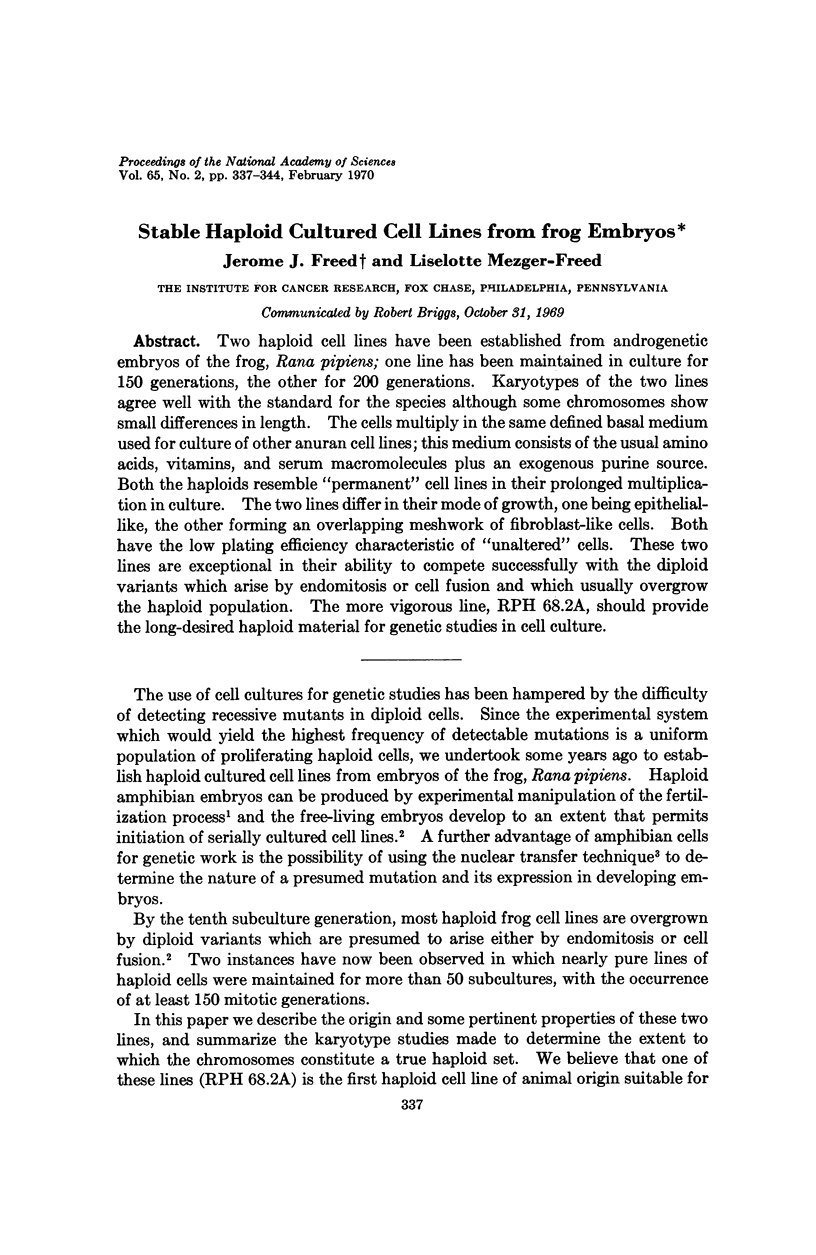
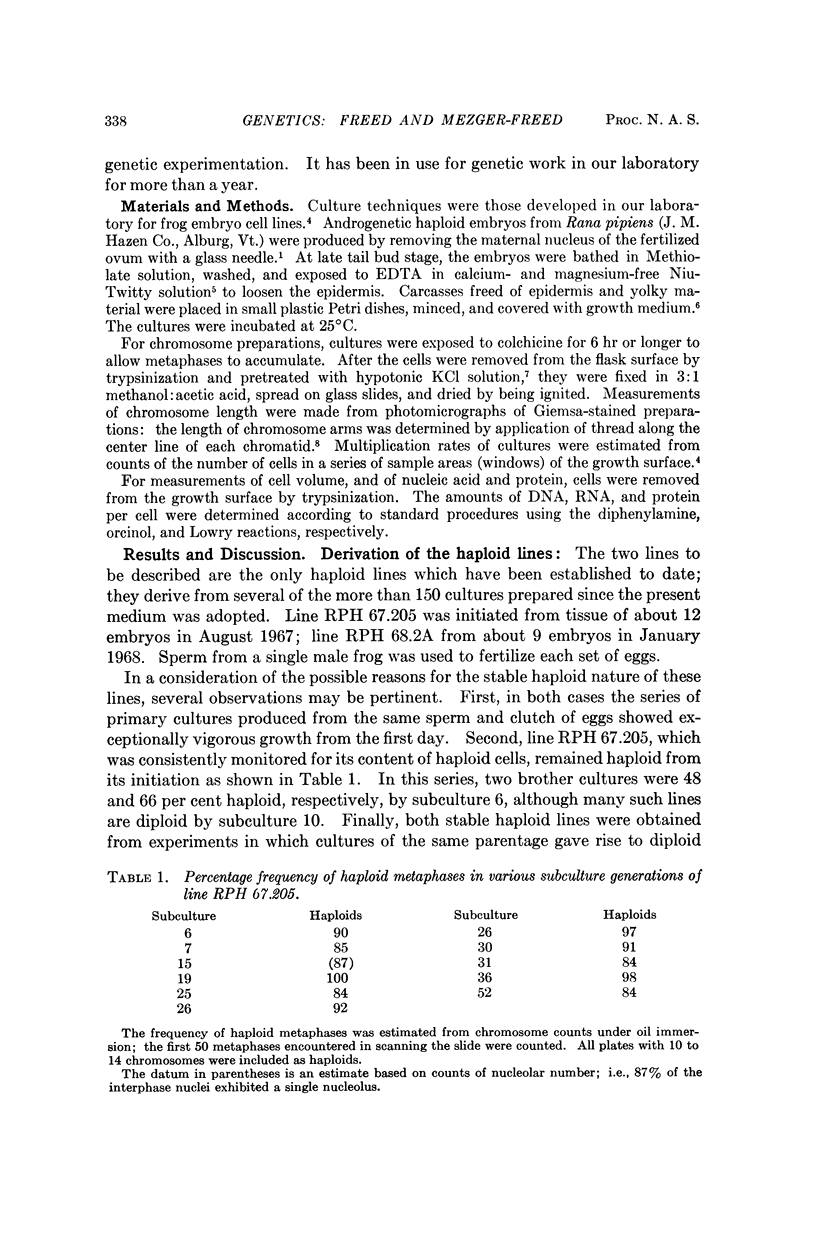
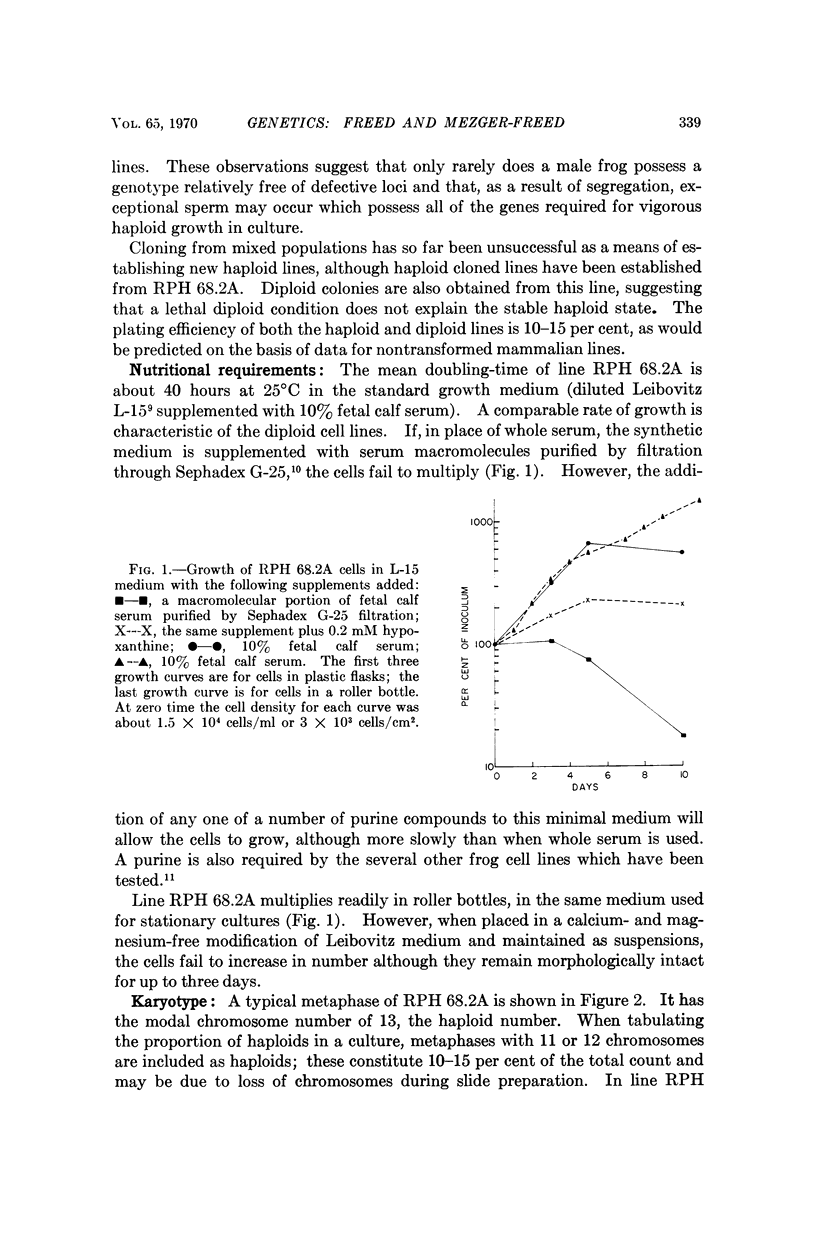
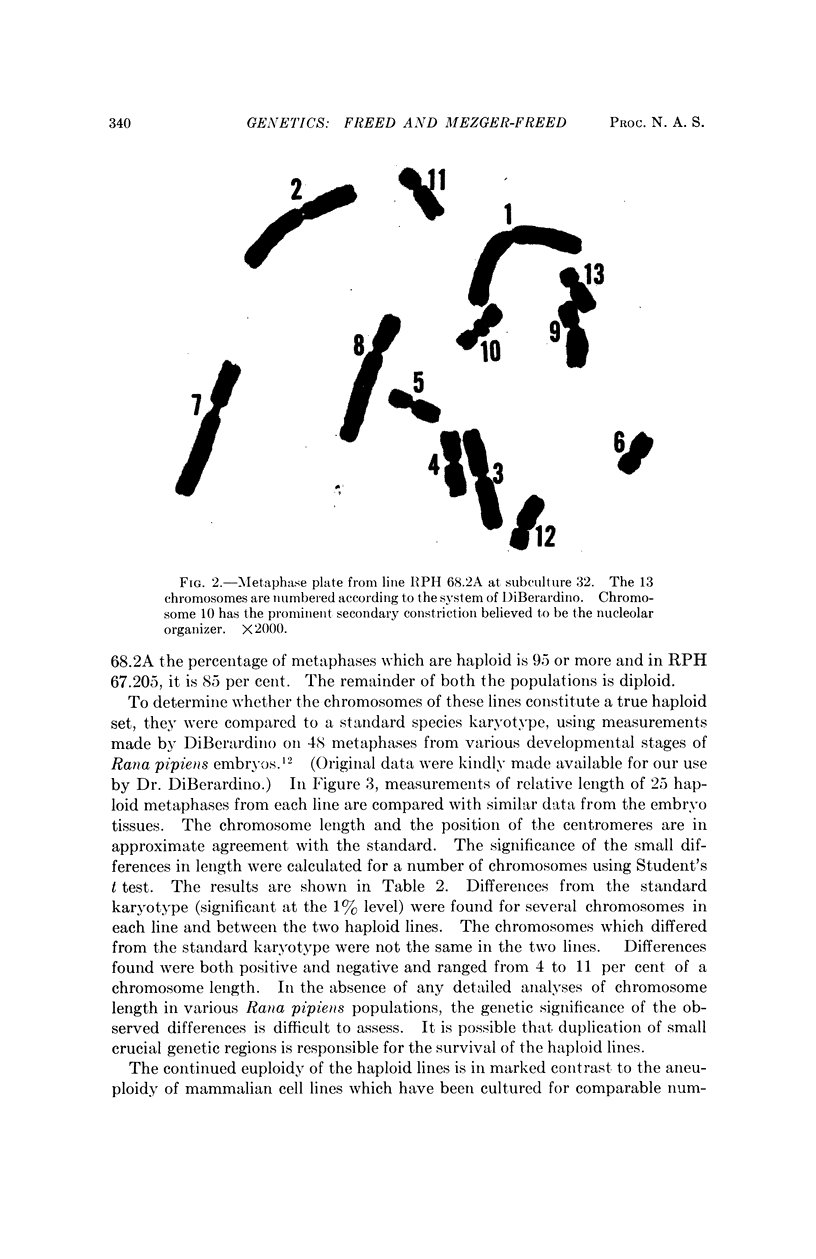

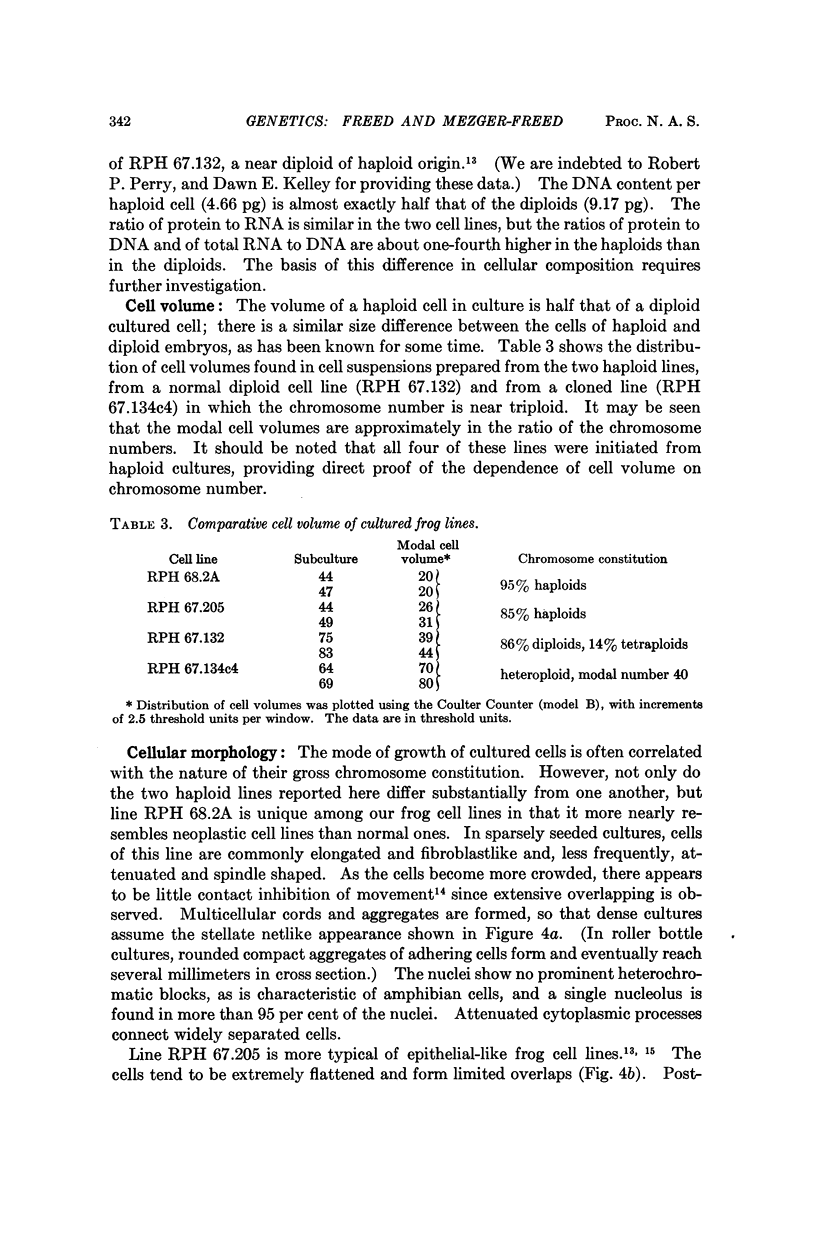
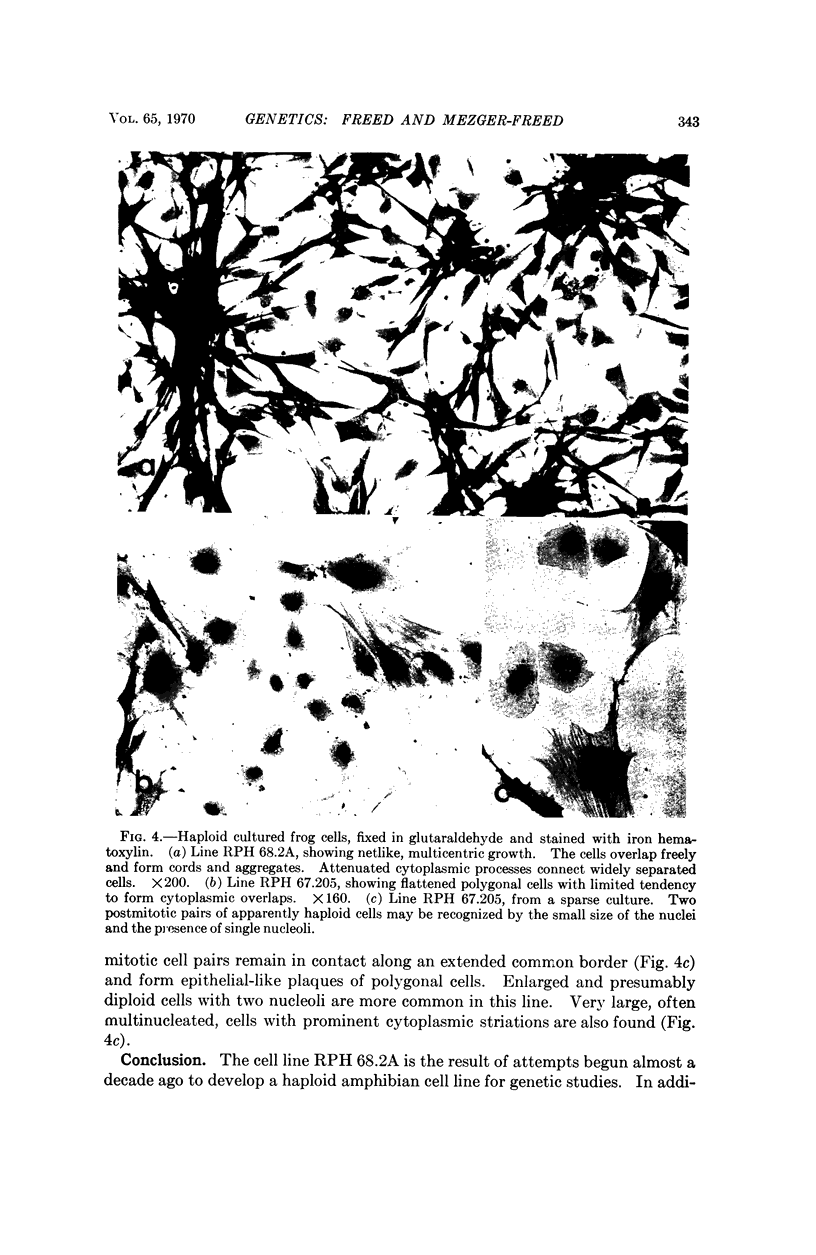

Images in this article
Selected References
These references are in PubMed. This may not be the complete list of references from this article.
- ABERCROMBIE M., HEAYSMAN J. E. Observations on the social behaviour of cells in tissue culture. II. Monolayering of fibroblasts. Exp Cell Res. 1954 May;6(2):293–306. doi: 10.1016/0014-4827(54)90176-7. [DOI] [PubMed] [Google Scholar]
- Balls M., Ruben L. N. Cultivation in vitro of normal and neoplastic cells of Xenopus laevis. Exp Cell Res. 1966 Oct;43(3):694–695. doi: 10.1016/0014-4827(66)90048-6. [DOI] [PubMed] [Google Scholar]
- Briggs R., King T. J. Transplantation of Living Nuclei From Blastula Cells into Enucleated Frogs' Eggs. Proc Natl Acad Sci U S A. 1952 May;38(5):455–463. doi: 10.1073/pnas.38.5.455. [DOI] [PMC free article] [PubMed] [Google Scholar]
- FREED J. J. Continuous cultivation of cells derived from haploid Rana pipiens embryos. Exp Cell Res. 1962 Mar;26:327–333. doi: 10.1016/0014-4827(62)90185-4. [DOI] [PubMed] [Google Scholar]
- Hungerford D. A. Leukocytes cultured from small inocula of whole blood and the preparation of metaphase chromosomes by treatment with hypotonic KCl. Stain Technol. 1965 Nov;40(6):333–338. doi: 10.3109/10520296509116440. [DOI] [PubMed] [Google Scholar]
- LEIBOVITZ A. THE GROWTH AND MAINTENANCE OF TISSUE-CELL CULTURES IN FREE GAS EXCHANGE WITH THE ATMOSPHERE. Am J Hyg. 1963 Sep;78:173–180. doi: 10.1093/oxfordjournals.aje.a120336. [DOI] [PubMed] [Google Scholar]
- Niu M. C., Twitty V. C. The Differentiation of Gastrula Ectoderm in Medium Conditioned by Axial Mesoderm. Proc Natl Acad Sci U S A. 1953 Sep;39(9):985–989. doi: 10.1073/pnas.39.9.985. [DOI] [PMC free article] [PubMed] [Google Scholar]
- PIEZ K. A., OYAMA V. I., LEVINTOW L., EAGLE H. Proteolysis in stored serum and its possible significance in cell culture. Nature. 1960 Oct 1;188:59–60. doi: 10.1038/188059a0. [DOI] [PubMed] [Google Scholar]




